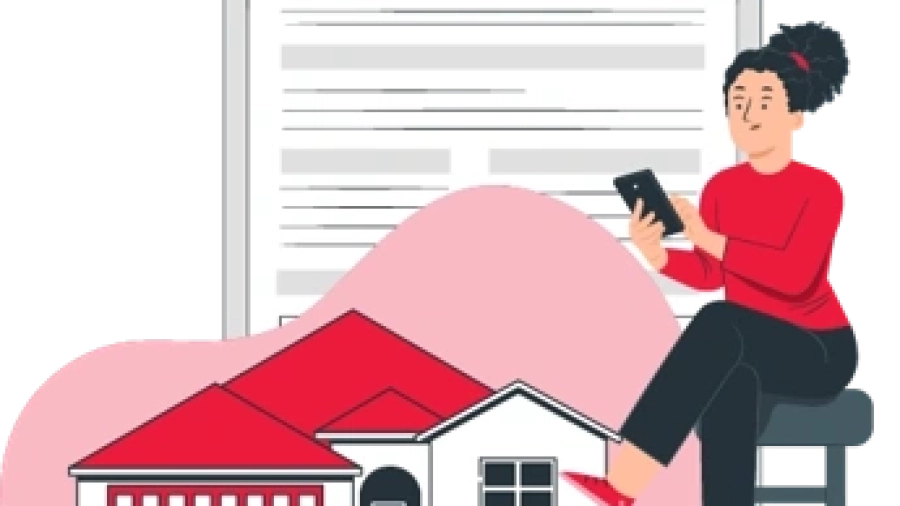If you’re a landlord or tenant, you may have encountered a document called a house rent slip. It’s a simple yet essential piece of paper that outlines the payment of rent between a tenant and a landlord. While it may not seem like a big deal, the rent slip holds significant importance in ensuring that both parties have a clear and well-documented record of financial transactions. In this blog post, we will explore what a house rent slip is, why it’s important, and how to create one that is clear, concise, and professional.
What is a House Rent Slip?
A house rent slip is essentially a receipt issued by the landlord to the tenant upon receiving rent payment. It serves as proof that the tenant has paid the agreed-upon rent for a specific period and acknowledges the amount received by the landlord.
This document typically includes essential details like the name of the tenant and landlord, the rental property address, the rent amount, payment date, and method of payment. It can also include additional information such as late fees (if any) and any balance carried forward.
Importance of a House Rent Slip
Although the house rent slip may seem trivial, it plays an essential role in maintaining transparency and ensuring smooth communication between the tenant and the landlord. Here’s why:
- Proof of Payment: It serves as a legal record that rent has been paid. This is especially helpful if any disputes arise about rent payments.
- Tax Deductions: Tenants who receive house rent slips may be eligible to claim tax deductions under specific circumstances, especially if they live in rented accommodation for work purposes.
- Clarity and Documentation: Both landlords and tenants benefit from having a clear paper trail. This ensures that the payment history is easily accessible and trackable for future reference.
- Legal Safeguard: In case of any disputes or legal matters regarding unpaid rent, the rent slip can be presented as evidence in a court of law. It acts as a safeguard for both parties.
- Mutual Trust: By issuing a rent slip, landlords demonstrate their professionalism and commitment to transparency, which can help foster trust with their tenants. Tenants, in turn, can feel more secure about their payments being properly documented.
Components of a Good House Rent Slip
For a rent slip to be effective, it must be clear, concise, and contain essential details. Here’s a breakdown of the most important elements every rent slip should include:
- Date of Payment: The exact date when the rent was received should be prominently displayed. This ensures that both parties are aware of when the transaction took place.
- Landlord and Tenant Information: Full names and contact details (at least the phone number or email) of both parties should be mentioned. This avoids any confusion about whom the slip is issued to and from.
- Rental Property Address: Mentioning the address of the rental property is critical to avoid any ambiguity about which property the payment applies to, especially if the landlord manages multiple properties.
- Amount Paid: Clearly state the amount of rent received. If there are any partial payments, mention them along with the remaining balance.
- Mode of Payment: It’s important to specify how the payment was made—whether in cash, by check, bank transfer, or any other form of payment.
- Rent Period: Mention the time frame for which the rent is being paid (e.g., “Rent for September 2024”). This ensures both parties are on the same page regarding which period the payment covers.
- Landlord Signature: A signature from the landlord (or their representative) is crucial as it confirms receipt of payment. A digital or physical signature adds an extra layer of authenticity.
- Tenant Signature (Optional): While this is not mandatory, including the tenant’s signature can add an additional layer of confirmation for both parties.
- Additional Notes: If any special terms or conditions apply (such as late fees or deductions), they should be clearly noted on the rent slip.
How to Create a Clear and Concise Rent Slip
Now that we’ve covered the importance and essential elements of a rent slip, let’s look at how you can create one that is both professional and straightforward.
1. Use a Template
The easiest way to create a rent slip is to use a template. There are plenty of rent slip templates available online, ranging from simple to more detailed formats. Choose a template that matches your needs, whether you want to keep it minimal or prefer including additional details.
Ensure the template is customizable so that you can add or remove fields based on your preferences.
2. Digital or Physical?
Decide whether you want to issue digital or paper rent slips. Digital rent slips are convenient, environmentally friendly, and can be stored and shared easily through email or cloud storage. Paper slips, however, may be preferred in certain situations, such as for tenants who don’t use digital communication.
If you’re going the digital route, there are apps and software that allow you to issue and store rent receipts effortlessly. Landlords and tenants can even automate the process of generating receipts each month, reducing manual work.
3. Keep it Simple
While it’s tempting to add too much information, the key to a good rent slip is clarity and conciseness. Avoid cluttering the slip with unnecessary details. Focus on the essential information such as the amount paid, payment date, and the property address.
A simple layout with well-spaced fields and clear labeling will make the slip easier to read and understand.
4. Accuracy is Key
Always ensure that the information on the rent slip is accurate and error-free. Double-check the spelling of names, the amount paid, and other details before issuing the slip. Mistakes in the rent slip can lead to confusion and disputes down the road.
5. Be Consistent
Once you’ve decided on the format and structure of your rent slip, stick to it. Consistency is key to creating a reliable record-keeping system. Whether you’re managing one rental property or several, using the same template will make your records more organized and easier to manage.
Sample House Rent Slip Template
Here’s an example of a simple rent slip that you can use as a reference.
House Rent Slip
Date of Payment: [Insert Date] Tenant Name: [Insert Tenant Name] Landlord Name: [Insert Landlord Name] Rental Property Address: [Insert Rental Address] Rent Amount: [Insert Rent Amount] Rent Period: [Insert Rent Period] Payment Mode: [Insert Mode of Payment] Remaining Balance (if any): [Insert Balance]
Landlord Signature: _______________
Tenant Signature (Optional): _______________
Legal Implications of House Rent Slips
It’s essential to be aware of the legal framework surrounding house rent slips, as they can be an important part of the rental agreement. A rent slip, while not a substitute for a formal lease, still holds legal weight as proof of payment.
Landlords: Ensure that your rent slips are issued promptly and accurately, as they can be used in court as evidence of payment or non-payment. They also serve as a professional record that can help avoid misunderstandings with tenants.
Tenants: Always keep your rent slips safe. They serve as evidence of rent payments, and if a landlord claims non-payment, your rent slips can help resolve any disputes. Make sure the information on the slip is correct before accepting it.
Common Mistakes to Avoid When Issuing Rent Slips
- Incomplete Information: Missing out on critical details like the payment date, rent amount, or property address can lead to confusion.
- Inaccurate Amounts: Be diligent about double-checking the rent amount and balance, especially if there are deductions or late fees.
- Not Issuing Slips Regularly: Some landlords skip issuing rent slips altogether. Make it a habit to issue one with every rent payment to avoid problems later on.
- Handwritten and Unclear: If issuing a paper slip, ensure that the handwriting is legible. A sloppy rent slip can be difficult to interpret and may cause disputes.
Conclusion
A house rent slip is more than just a receipt; it’s a vital document that helps maintain transparency, clarity, and trust between landlords and tenants. Whether you’re a landlord looking to formalize your rental payments or a tenant seeking proof of payment, a well-crafted rent slip is essential.
By following the guidelines discussed in this blog, you can create a clear and concise rent slip that meets both legal and professional standards. Whether you prefer a simple template or a more detailed document, the key is to ensure accuracy, consistency, and clarity.
Rent slips are not just administrative tools—they can be your best defense in case of misunderstandings or disputes, and they ensure that everyone is on the same page regarding rent payments. So, the next time you collect or pay rent, make sure to issue or request a rent slip that covers all the important details!

